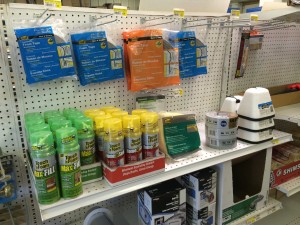For any outdoor HVAC system, proper insulation is crucial to ensure optimal performance and energy efficiency. The insulation not only prevents heat transfer but also protects the pipes from external damage, such as extreme temperatures, UV radiation, and moisture. In this guide, we'll explore the various types of insulation available for outdoor HVAC systems and some common challenges you may encounter.

Types of Insulation for Outdoor HVAC Pipes
1. Fiberglass insulation - Made from thin strands of glass, fiberglass insulation is one of the most popular types of insulation for pipes. It is easy to install, lightweight, and comes in various sizes and shapes. Fiberglass insulation can withstand temperatures ranging from -20°F to 1,000°F and has an R-value (a measure of thermal resistance) of 3.7 to 4.3 per inch.
2. Foam insulation- Foam insulation is made of polyurethane or polyethylene and comes in various forms, such as tubes, sheets, and spray foam. Foam insulation is resistant to moisture, insects, and mold, making it ideal for outdoor use. It also has a high R-value of 5 to 8 per inch, providing excellent thermal insulation.
3. Rubber insulation - Rubber insulation is another popular option for outdoor HVAC pipes. It is resistant to UV radiation, fire, and chemicals and can maintain its integrity even in extreme temperatures. Rubber insulation has an R-value of 3.3 to 7.0 per inch, depending on the thickness.
4. Aerogel insulation - Aerogel is a highly effective but expensive insulation material made of silica particles suspended in a gel. Aerogel insulation has an R-value of 10 to 30 per inch, making it the most effective insulation material available. However, it is not commonly used due to its high cost.
Challenges Associated with Outdoor Pipe Insulation
1. Moisture - One of the most significant challenges with outdoor pipe insulation is moisture. Moisture can reduce the effectiveness of the insulation, leading to heat loss and even condensation between the cold pipe and the insulation. To prevent moisture buildup, it is essential to use moisture-resistant insulation materials and install a vapor barrier between the insulation and the pipe.
2. UV radiation - Exposure to UV radiation can damage the insulation material and reduce its effectiveness. To prevent this, it is crucial to use insulation materials that are resistant to UV radiation, such as rubber or foam insulation. You can also paint the insulation with a UV-resistant coating to provide additional protection.
3. Extreme temperature variations - Outdoor HVAC pipe insulation can be exposed to extreme temperature variations, ranging from freezing temperatures to scorching sunlight. It is important to use insulation materials that can withstand these temperature changes without losing their insulating properties.
4. External damage - Outdoor pipe insulation can be subject to external damage from environmental factors, such as animals, tree branches, and heavy rain. Insulation materials such as foam or rubber are more resistant to damage than fiberglass.
In conclusion, choosing the right insulation material for your outdoor HVAC pipes is essential for maintaining optimal performance and energy efficiency. Your choice depends on factors such as temperature range, exposure to UV radiation, and resistance to moisture and external damage. Consider seeking professional advice and conducting thorough research before making your choice. With proper insulation, you can ensure your HVAC system operates efficiently and saves you money on energy bills. And most importantly, it will keep your home or business comfortable in all seasons.